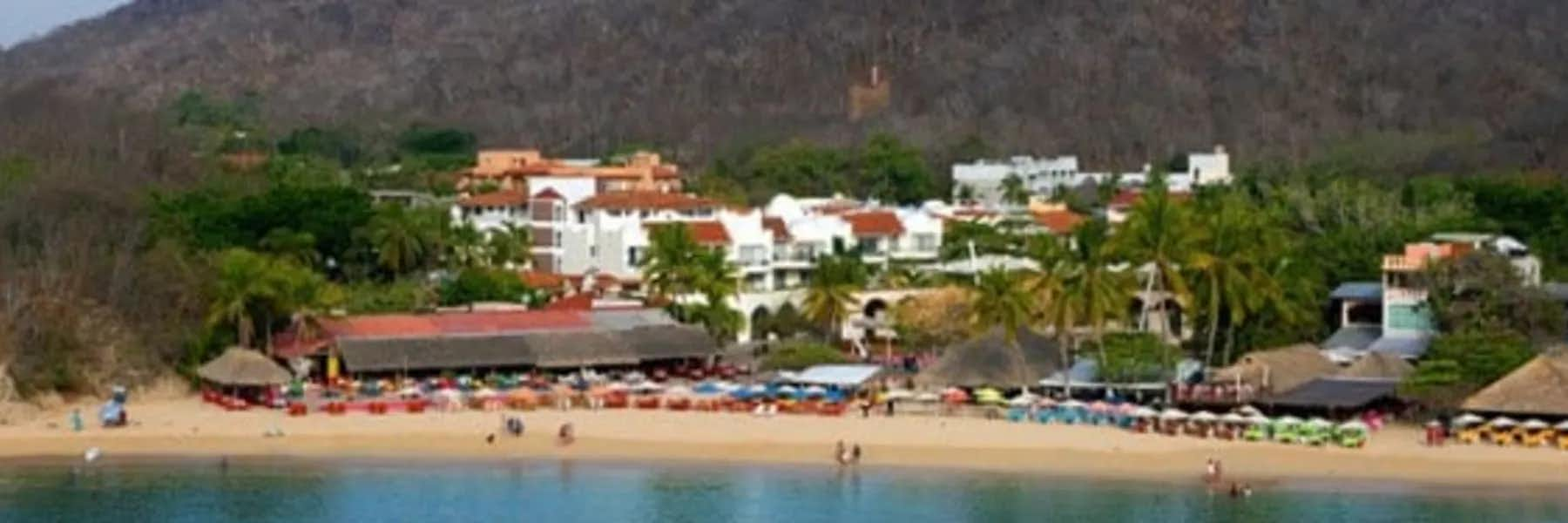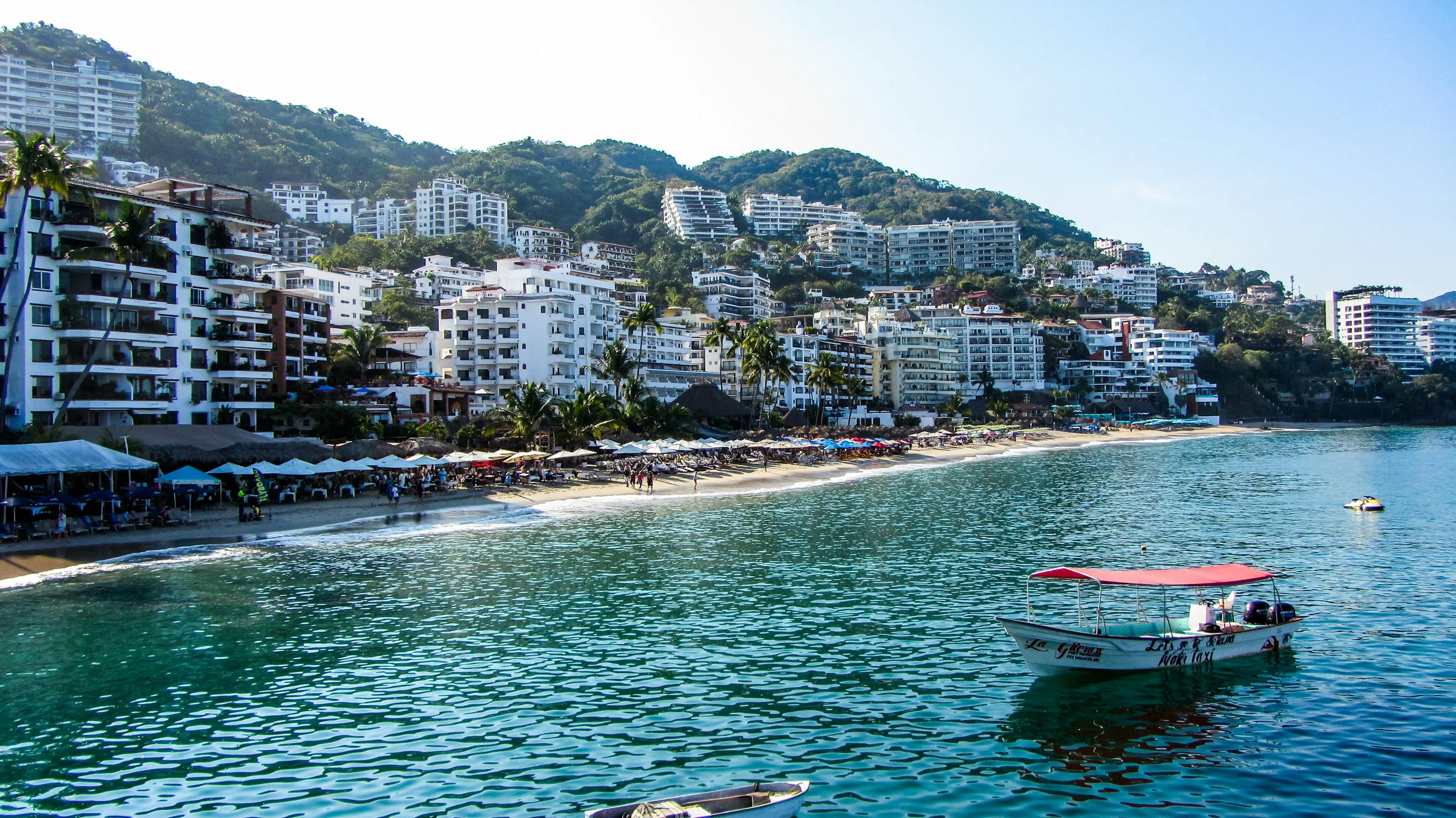Table of Contents
Retire in Huatulco, MexicoMedical Care in Huatulco, MexicoLifestyle in Huatulco, MexicoThings to Do in Huatulco, MexicoCost of Living in Huatulco, MexicoIn Low-Rise Huatulco, Pacific-Coast Living is EasyBuying Real Estate in Huatulco, MexicoEscaping the Office for the Pristine Bays of Huatulco
Once primarily known to those in Oaxaca City, Mexico City, a sprinkling of adventurers, and a few in-the-know global travelers, Huatulco is a breathtaking (possibly perfect) coastal escape. Found where the Sierra Madre Mountains subdues the Pacific Ocean on Mexico's western boundary, this spectacular stretch of rugged coastline (some 23 miles long) boasts nine bays, 36 beaches, and has served as a minimally developed, natural playground for generations. Only since 1985 has Huatulco enjoyed the benefits of an international airport and planned development. And the small town of Crucecita, with its wonderful central park, is the population center of the area.
Along the western coastline of the state of Oaxaca (wah-HOK-ah), this purpose-built area was formerly known as The Bays of Huatulco but is now simply known as Huatulco. Located a bit more than 300 miles south of Acapulco, and a six-hour drive from Oaxaca City, this stretch of coastline arguably offers some of the best, if not the most accessible, bays and beaches to be found along Mexico’s Pacific coastline. In fact, Huatulco offers some of the best coastal scenery available anywhere. Cliffs and rocky shores separated by calm bays with sandy beaches provide breathtaking landscapes. Photographers and painters love Huatulco, even if they never dip a toe into the water.
The nine bays and over 30 beaches along these 23 plus miles provide visitors and residents access to a stunning selection of aquamarine inlets, set against the magnificent backdrop of the Sierra Madre Mountains. Not all bays and beaches are accessible by land, however. In fact, the majority of them are only accessible by boat which allows you to experience some pristine beaches, productive sport fishing, awesome diving, and snorkeling. If you don't have a boat, no worries. A local marina offers lots for charter. And the good news is that a couple of the best beaches/bays are road accessible, only a short drive from Crucecita.
Get Your Free Mexico Report Today!
Get Your Free Mexico Report Today!
Learn more about Mexico and other countries in our daily postcard e-letter. Simply enter your email address below and we’ll send you a free special report – Mexico: The Perfect Close-to-Home Retirement Haven.
By submitting your email address, you will receive a free subscription to IL Postcards and special offers from International Living and our affiliates. You can unsubscribe at any time, and we encourage you to read more about our Privacy Policy.
Retire in Huatulco, Mexico
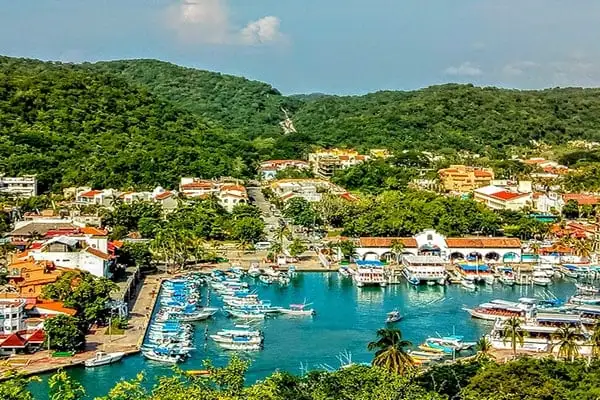
Mexico has a couple of simple, straightforward visas for retirees; the first is a Temporary Resident Visa and the second is a Permanent Resident Visa. Both permit full-time residency in Mexico but there are some significant differences such as income requirements, employment legalities, and automobile importation.
Visitors spending less than 180 days in Mexico need only possess a valid passport. No visa required. That allows all those snowbirds to make repeat, annual visits without worrying about a visa, as long as they do not exceed the 180-day limit. If you wish to remain longer than 180 days, you must apply for a visa.
Begin your visa quest at the Mexican Consulate in your home state. There, the consulate officer will review your completed application, verify your income based on the documents you provide, review a nominal number of other documents, and your completed application. After a short interview, if approved, you’ll likely depart with your residency visa affixed to the inside of your passport.
All legal residents over the age of 60 qualify for a discount card from INAPAM (Instituto Nacional para las Personas Adultas Mayores) facilitating discounts on a wide variety of goods and services.
Taxis are the primary mode of transportation in this small community and the prices are geared toward the local population and are more than reasonable, cheap in fact. Three or four dollars can take you across town.
Medical Care in Huatulco, Mexico
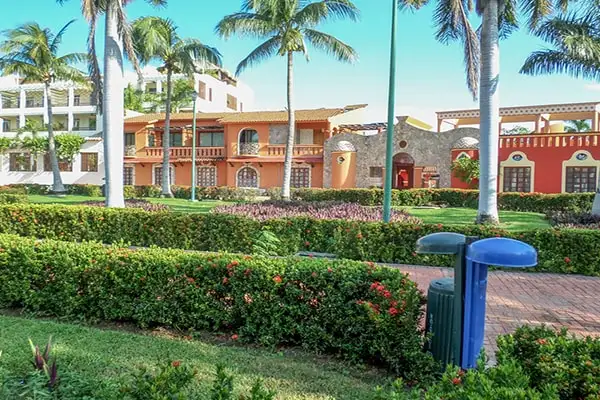
For a small town, Huatulco provides good healthcare options. There are two hospitals, one operated by the Navy and the other is the IMSS government hospital. Both will see patients. The Red Cross clinic, on the main square, also sees patients for less critical needs. Doctors in Huatulco are very agreeable to making house calls if needed. And while no Medicare or Canadian government insurance options are accepted (except for approved private insurance plans), the costs are low enough so that even a surgical procedure won’t break your bank.
A regular doctor appointment will run from about $12 to $27 dollars, depending on the specialty.
Pharmacies in Huatulco stay open late, some 24 hours. And like all pharmacies in Mexico, prescriptions are only needed for strong antibiotics and narcotics. Prices are, literally, pennies on the dollar for most medication, compared to the U.S.
For those issues needing more advanced medical care, you can make the drive to Puerto Escondido about two hours away. But it appears a better option is on the horizon. The Oaxaca government has recently announced a project, in partnership with Canadian investors, to construct a $256 million dollar hospital in the Huatulco area. The project is intended to attract additional travelers to the area through the growing medical tourism business.
Lifestyle in Huatulco, Mexico
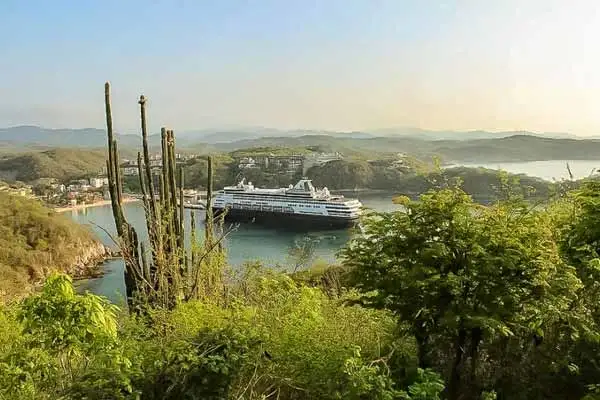
The name Huatulco is more of a regional brand (much like Riviera Maya), rather than a specific location. And while brand recognition has gained some ground, it wasn’t until the Mexican government stepped in (in the mid-1980s) that the region became a planned tourist area. The vision of Mexico's national tourism bureau (FONATUR) was to develop the area much as they had done with Cancun.
They intended to create a planned tourist zone with solid infrastructure including hotels and good roads as well as a good water supply, fast internet, and a stable electrical grid. Following a proven formula, these things would assure a solid base for further private development. In the case of Huatulco, however, much care and consideration was also given to the sustainability of the natural environment and the result was worth the effort.
Significant input from local residents influenced the development plan to avoid the glitzy feel of Cancun's hotel zone. Structures were limited to low rise only and there is plenty of open space left untouched and natural. The area in and around the small town of Crucecita shows the care given to planning, with good roads, lovely landscaped medians, a very nice and active city square and park, a nearby international airport, and functional infrastructure. The planned development was, indeed, a success.
Crucecita and the immediate area, are home to numerous upscale all-inclusive resorts, luxurious condos (with killer views of the rugged coastline), adequate shopping for the essentials, and a number of regular hotels. But true to the goals, these properties do not offend the landscape and seem to blend in.
Crucecita also offers a nice variety of good restaurants with all the usual favorites you would expect from pizza and steak to local specialties including, of course, fresh seafood, salads, fresh fruits, and local favorites such as mole dishes. There are even a couple of very active, ongoing cooking schools/classes for those wanting to learn the local secrets. As a tourist town, it also supports numbers of gift and artisan shops around the city square, along with at least one traditional weaving business, a skill known well in Oaxaca.
Access to Huatulco can be a bit of a challenge as the primary highway connecting it to the rest of Mexico is marred by nonsensical, frequent speed bumps which drastically slows traffic at too-frequent intervals. The road is already narrow and winding and cuts through the Sierra Madre Mountains and the speed bumps only make it worse. And while a road improvement project continues (as it has for several years) between Oaxaca City and Huatulco, when completed, the drive will be shortened from six hours to four hours, making it within reach for those seeking a weekend getaway.
While the international airport is only about 20 minutes from Crucecita, nearly all flights arrive by a connection through Mexico City. For now, direct flights to Huatulco originate only from Canada and those fly mostly during winter snowbird season. U.S. airlines have not offered any direct flights making air travel a bit lengthy.
Huatulco’s lifeblood is tourism, the purpose for which it was intentionally designed. And it serves that purpose well. About 80% of the area’s tourists are Mexican citizens. The remaining 20% come mostly from Canada (the airline advantage), snowbirds who usually spend four to six months in Huatulco, escaping the cold winters. Some 1,000 Canadians return to Huatulco each winter, renewing annual friendships and playing a significant role in boosting the area’s economy, a boost eagerly anticipated by the locals.
There are also a handful of U.S. tourists who make the trek plus an estimated 150 or so, permanent expat residents in Huatulco. Most of the permanent expats migrated from Canada. But there are a few exceptions.
Get Your Free Mexico Report Today!
Get Your Free Mexico Report Today!
Learn more about Mexico and other countries in our daily postcard e-letter. Simply enter your email address below and we’ll send you a free special report – Mexico: The Perfect Close-to-Home Retirement Haven.
By submitting your email address, you will receive a free subscription to IL Postcards and special offers from International Living and our affiliates. You can unsubscribe at any time, and we encourage you to read more about our Privacy Policy.
Things to do in Huatulco, Mexico
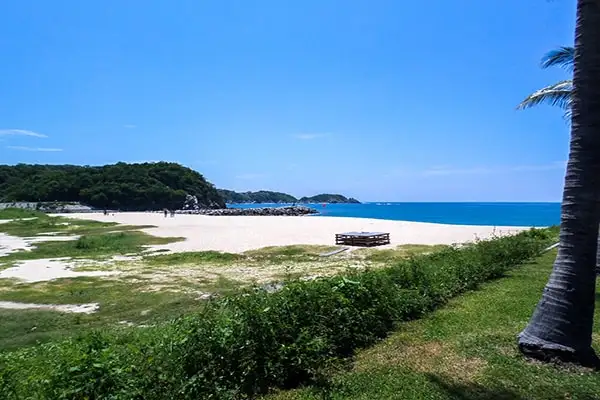
Going to the beach seems to be a regular pastime for the residents of Crucecita. Beach parties/gatherings often involve picnics and cold drinks. The evenings are social occasions with folks meeting in and around the city square to enjoy street performers and music or maybe a game of darts and a few beers at one of the local watering holes.
Crucecita also offers good internet so those interested in keeping up with their favorite sports teams can watch live streaming games, or binge-watch a Netflix series.
FedEx and the other carriers line up each morning to collect their packages from the airport. All the residents look forward to the deliveries as the trucks parade through town. It's how it is here. There are a couple of decent grocery stores but for almost everything else, it seems the locals have learned to shop online or drive to the big city, Salina Cruz. There is a Walmart and Sam's Club there but it's about a three-hour drive, maybe more. It makes for a long day.
Cost of Living in Huatulco, Mexico
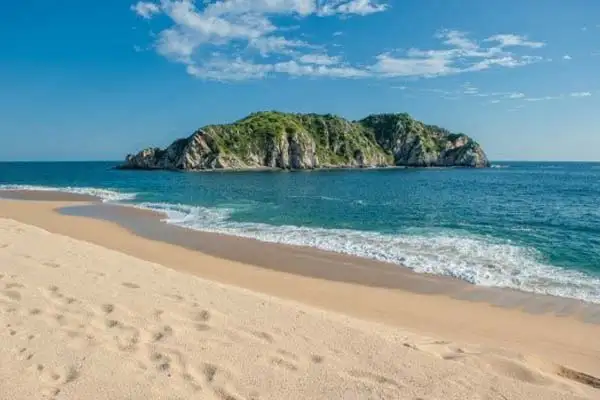
The lifestyle here is a fraction of what it takes to live anywhere in North America, and the expats are taking full advantage.
A couple can find a wonderful two-bedroom condo for about $500 to $700 a month depending on your particular tastes. A nice home with an ocean view can set you back a little more at around the $1,000 to $1,500 a month. Most places have gardening and maid service, and gated properties are springing up at a stimulating rate. On the grand scale, the area is quite safe, and because it is a federally built city, the security presence is quite prominent.
The restaurants are very reasonable, where a $25 dinner for two with a drink is standard. A $5 Mexican dish is very easily obtained just about everywhere. I recommend Terra-Cotta restaurant for breakfast ($12 for two), El Grillo Marinero for lunch ($15 for two), and for sandy-toe ambiance, La Terraza Restaurante & Grille for a great dinner.
Come visit Huatulco and see what all the fuss is about. The weather is great, the people are friendly, the crowds are somewhere else, and your money goes a long way. Chances are, you will find out why everyone is returning year after year to enjoy the calm waters and wonderful lifestyle. You may just find Huatulco is the retirement place of your dreams.
| Expenses | Cost $USD |
|---|---|
| Rent | $500 |
| Utilities | $60 |
| Groceries | $325 |
| Entertainment | $250 |
| Housekeeping | $100 |
| Medical | $150 |
| Transportation (car, gas, insurance) | $100 |
| Transportation (public) | $45 |
| Total: | $1,530 |
In Low-Rise Huatulco, Pacific-Coast Living is Easy
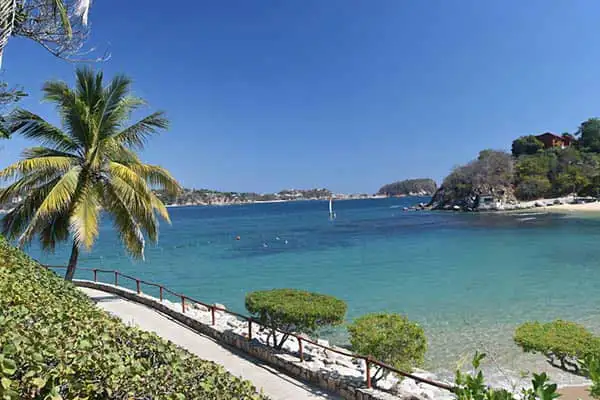
By Jason Holland
The small bay before me featured calm, blue Pacific waters with rocky cliffs dotted with cacti and small trees. On the golden-sand beach, a mix of local families, vacationers, and expats lounged in the sun. Tour operators approached the beach-goers offering jet-ski and paddleboard rentals…or excursions to see the coast—a bit of sightseeing and snorkeling. They’d pick you up from the shore or at the nearby marina.
Myself, I’m content right where I am. At El Habanero Loko restaurant, sitting in a plastic chair, my toes in the sand, enjoying ceviche made from local fresh catch ($8). That’s my favorite meal when I’m on the coast in Latin America. And one of the best I’ve had was here in Huatulco, a beach community on Mexico’s southern Pacific coast, in the state of Oaxaca. (Watch out for the salsa though—it was fire!)
Huatulco is made up of nine bays and 36 beaches on a stretch from Huatulco National Park—which is undeveloped but does feature some remote beaches you can visit for the day—to the Copalita River about 20 minutes’ drive east.
The region is quite hilly where the foothills of Sierra Madre del Sur mountains come to the Pacific, with the highest peaks visible on the horizon in the far distance. Condos and villas dot the hills by the water, which is why so many have such great views. Many are also on flat land, within a quick walk to the sand.You can get around on foot, bike, or scooter.Much of the development is clustered around three population centers which are just a few minutes from each other. There are other communities and developments farther afield and in between. In many parts of Huatulco you can get around on foot, bike, or scooter quite easily.
The bay where I’m enjoying ceviche, Santa Cruz, is one of the more popular areas to live. The marina draws a lot of people for boat tours—residents with their own craft can also rent a slip. Plus, there are several hotels, resorts, and condos here, as well as a large park (that hosts an organic farmers’ market on Saturdays), an arts and crafts market, and some restaurants, shops, and cafés. Seafood restaurants front right onto the beach, with tables on the sand. Generally, a fun little place to stroll around and hang out. About 40 cruise ships per year call here, at the dock extending into the bay.
La Crucecita is the main town, with shops, banks, and the like, as well as some residential development, mostly for locals. It has a pleasant, walkable town center, and shopping plazas and the like on the outskirts for errands and grocery shopping.
The Chahué area has a marina, a few little shopping plazas, well-regarded restaurants (including fine dining with ocean views), condos, and homes. Homes on the canal near the marina have their own docks. The beach here is Blue Flag accredited, which means it’s been recognized for sound ecological practices.
Tangolunda is where the all-inclusive resorts are, but it also has plenty of residential development and some businesses.
One little community I liked a lot was La Bocana, which is on the far eastern edge of the Huatulco region. It’s the surfing beach (being at a river mouth means there are some serious waves) and, at the moment, there’s one restaurant and one bar on the beach. Plus, adjacent to the little community are protected areas preserving local flora and fauna, as well as an archaeological site. So, it’s very quiet.
The cool thing is that nothing is really very far away. I don’t think I took a drive more than 25 minutes during my visit, and that was going from one end of Huatulco to the other.
Huatulco isn’t the best-known beach destination in Mexico. Before the pandemic, it was on track to bring in about a half-million visitors each year. But it’s popular with those in the know. For years, Canadian snowbirds and vacationers have been a mainstay; the small airport is mostly national flights until winter, when routes from cities like Toronto and Calgary start coming in for the season.
Local expats tell me more Americans are coming these days. In fact, direct flights from Chicago and Dallas have started up in the winter season as well. And during my visit I heard more than one European accent.
It’s also quite popular with Mexican tourists, who take direct flights from Mexico City and other airports around the country. Flights are cheap, less than $100 round-trip. A new highway from the state capital, Oaxaca City, is slated to be completed this year and, by cutting drive times by several hours, is expected to bring more national tourists to Huatulco.
It’s important to note that Huatulco was designed virtually from scratch as a tourism center. FONATUR, the Mexican government’s tourism authority, master-planned the whole place in the 1980s. In fact, to this day FONATUR is “in charge.” For one, they’ve put in place sustainable environmental practices. For example, each new development must set aside a good amount of green space, and wastewater is treated and used in irrigation. They must also approve new development. And there are limits. The whole area is designed to be low density. Only buildings of four stories or under are allowed. There are only a few larger all-inclusive resorts, not a whole strip of them like in Cancún.
Thoroughfares reach all over the region, as well as connecting roads through communities and into areas where future development is expected. Every road is well signed and with turn lanes, traffic circles, and traffic lights. Main roads have a grassy median with well-tended landscaping. You’ll find plentiful parking, even at the beaches. There are nice parks and plazas. This might not seem like a big deal. But in some Mexican beach communities, amenities like this are in short supply.
Roads and highways are well-signed and signaled. Parking is plentiful, with easy access to beaches and parks.
Buying Real Estate in Huatulco, Mexico
Adding to Huatulco’s welcoming vibe, there is also a variety of real estate at all price points. From simple condos well under $200,000 close to the beach (everything is close to the beach in Huatulco) to hillside luxury villas with panoramic Pacific views in the millions (and everything in between).Units are available for under $200,000.The limited inventory, a situation created by tight reins on new development, has pushed real estate prices higher than in some other parts of Mexico. Expect to pay $400,000 and up for a new luxury condo with ocean views from which you can walk to the beach. With no view, units are available for under $200,000. Ocean-view villas will run you $1 million. Again, go inland and you’ll pay much less.
On the cheaper side is a two-bedroom condo in La Crucecita, the main town. It’s pretty basic, but there is a community pool. And like I said, although it is in town, everything is close in Huatulco, so the beach is a few minutes’ drive. It comes furnished and is listed at $112,000.
In Santa Cruz, there is a preconstruction condo opportunity. The building, called Ziba Suites, features a rooftop terrace with infinity pool. No views of the bay, but the sand is just a block or so away. A one-bedroom condo here is listed at $143,000. When I was here in November 2021, I toured the site, which was well underway.
In Tangolunda there is a two-bedroom luxury condo in a new building close to the golf course and beach. Sales price is $205,000.
Overlooking the marina in Chahué is a two-bedroom condo for $223,000. The ground level of the building features restaurants and cafés, and you can walk to the beach and town. Also in Chahué is a three-bedroom home in a gated community for $310,000. Centrally located, it’s close to the beach and town.
Back in Santa Cruz, in the heart of the action, is an ocean-view two-bedroom beach condo with large terrace for $289,000. It comes furnished.
On the higher end is a luxury two-bedroom condo with panoramic ocean views and walking distance to one of the nicest swimmable beaches in Huatulco. It’s available for $419,000. The community has infinity pools, a gym, storage lockers for kayaks and paddleboards, and other amenities.
What will $1 million or so get you? In the hills of Arrocito Beach, adjacent to Tangolunda, is a 5,200-square-foot, four-bedroom villa with panoramic ocean views from all rooms. It has a large terrace with infinity pool and Jacuzzi, comes furnished, and is located in a gated community.
For real estate help, contact Brent May and his team at Bayside Real Estate. (See: Baysiderealestatehuatulco.com)
Agents with Bayside Real Estate/Own Mexico tell me that in the last couple of years, even during the pandemic, they’ve seen steady sales—that’s resales of condos and homes, as well as preconstruction condos and even ready-to-build lots. Some of the buyers are expats moving down, but the majority are second-home buyers from Mexico and the U.S. and Canada, as well as investors seeking vacation rental income or those buying preconstruction to sell for a profit after delivery.
Prospective vacation rental owners benefit in that many condos for sale come furnished—they’re turnkey and ready to rent. You don’t have to invest in furniture and other items. You could rent short-term to vacationers and medium- or long-term to snowbirds and expats. And there is a lot to attract them. The aforementioned 36 beaches. The dining scene, which offers cuisine from sports bar fare to tacos to Italian to sushi. Boat tours, fishing, snorkeling, and more, as well as jungle hiking, waterfalls, mountain biking. The surfing beach is at La Bocana. The one golf course, full 18 holes, is said to be excellent, although local golfers told me that green fees (up to $195 on weekends) are a bit pricey.
Whether you plan to spend time there, rent out your place for income, or a bit of both, Huatulco is a great place to do it.
Escaping the Office for the Pristine Bays of Huatulco
By Don Murray

Boats filled with passengers run parallel to the coast, carving their way through the dark Pacific Ocean. They’re headed out for the day, exploring the nine beautiful bays that are Huatulco’s claim to fame, and which have made the area one of Mexico’s most cherished resources.
Along the western coastline of the state of Oaxaca, the purpose-developed area of Huatulco is a little more than 300 miles south of Acapulco and a six-hour drive from Oaxaca City. It offers some of the best, most accessible bays and beaches to be found along Mexico’s Pacific coastline. In fact, it offers some of the best coastal scenery available anywhere.
Mike and Carolyn Bahner were ready to make the move from South Carolina long before they finally made the jump. Mike was tired of the pressures of his law practice and says he had no time to enjoy life.
The couple attended an International Living conference in May of 2017, hoping to learn enough to further narrow their choices for their escape.
“Before that conference,” says Carolyn, “Huatulco wasn’t even on our radar. But after seeing the presentation, we knew we needed to learn more.”
“I couldn’t get away from work,” said Mike, “so Carolyn flew to Huatulco alone.” A local real estate agent met her at the airport and gave her a tour of the area. She fell in love with a beautiful condo and bought it on the spot. Mike and Carolyn made their permanent move in April of 2018. “We have never had a moment of regret,” Mike says.
The Bahners’ home is in the small city of Crucecita, the main population center for the Huatulco region and the hub for the tourism industry. It’s a well-planned location, with good roads, landscaped medians, a busy city square and park, and a nearby international airport (Bahías de Huatulco).
The population of full-time residents in Crucecita is a little over 15,000. As a small town, shopping options are naturally limited, so the Bahners have joined the ranks of others in the area and look forward to regular deliveries from Amazon. Any inconvenience is outweighed by the lifestyle they enjoy in the luxury surroundings of their coastal home.
“We love our condo. It’s like living in a beautifully landscaped resort,” says Carolyn. “We have about 1,800 square feet, plus another 300 square feet of terrace that is like our outdoor living area. There’s a wonderful view of the ocean and direct beach access. And our community has five swimming pools, too.” According to local real estate agents, similar luxury homes are selling in the range of $420,000. And while Huatulco does offer some very high-end luxury options, there are also some lovely homes in the $175,000 to $200,000 range, especially in the Puerto Angel area.
The name Huatulco is more of a regional brand than a specific location. It wasn’t until the mid-1980s that the region became a planned tourist area. The vision of Mexico’s national tourism bureau (FONATUR) was to develop the area, much as they had done with Cancún, and create a planned tourist zone with solid infrastructure, including hotels, good roads, a reliable water supply, and a stable electrical grid. Care and consideration was also given to the sustainability of the natural environment, and the result was worth the effort. Structures were limited to low-rise only, and there is plenty of open space left in an untouched and natural state.
Going to the beach is a regular pastime for the residents of Crucecita. Evenings are social occasions with folks meeting in and around the city square to enjoy street performers and music or maybe a game of darts and a few beers at one of the local watering holes.
Crucecita also has good internet, so those interested in keeping up with their favorite sports teams can watch live-streamed games or binge-watch a Netflix series.
“FedEx and the other carriers line up each morning to collect their packages from the airport. We all look forward to our deliveries as the trucks parade through town. It’s how it is here. We have a couple of decent grocery stores, but for almost everything else, we have all learned to shop online or drive to the big city, Salina Cruz, a couple of hours away. There is a Walmart and Sam’s Club there,” says Mike.
Huatulco is a long-standing tourist destination that seems content in its role. Peaceful. Quiet. Safe. Quaint. No glitz. And glamour is reserved for mother nature and a small number of exclusive resorts. Improved access by the airlines and the planned upgrades to the highway will go a long way toward increasing exposure.
But for now, it’s the place you see in your dreams, with isolated bays and beaches and just enough civilization to maintain creature comforts. For some, it is, indeed, the end of the rainbow.
Featured Image Copyright: ©iStock/User10095428_393
Get Your Free Mexico Report Today!
Get Your Free Mexico Report Today!
Learn more about Mexico and other countries in our daily postcard e-letter. Simply enter your email address below and we’ll send you a free special report – Mexico: The Perfect Close-to-Home Retirement Haven.
By submitting your email address, you will receive a free subscription to IL Postcards and special offers from International Living and our affiliates. You can unsubscribe at any time, and we encourage you to read more about our Privacy Policy.
